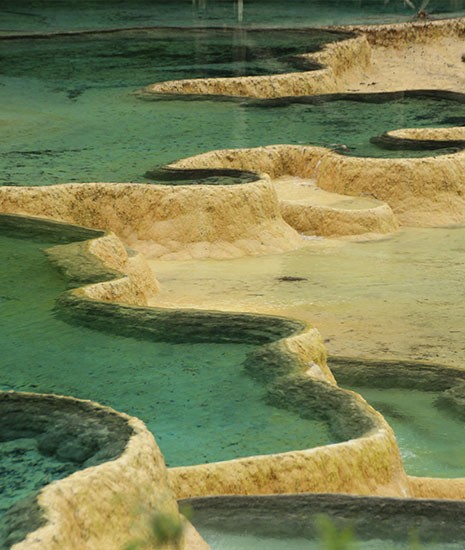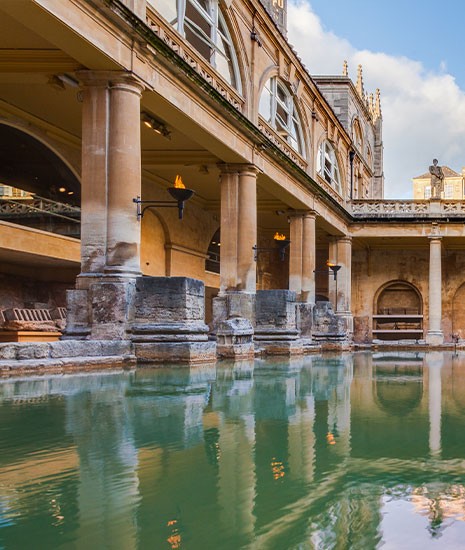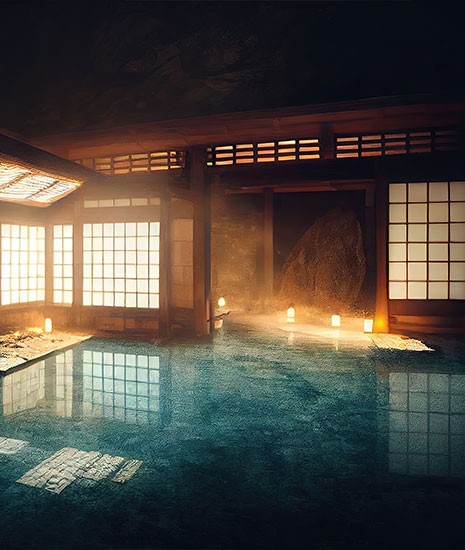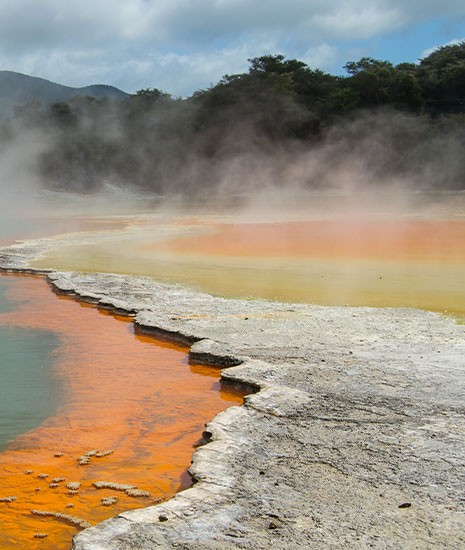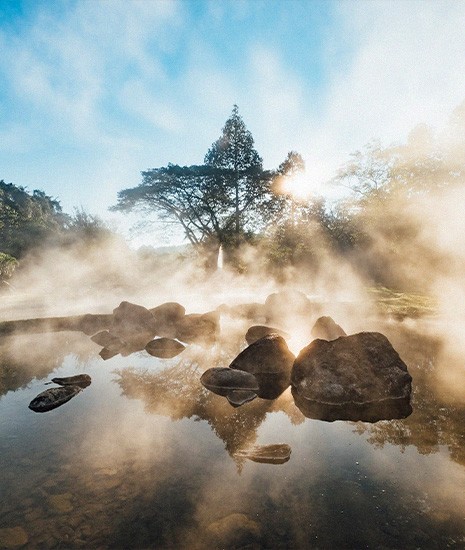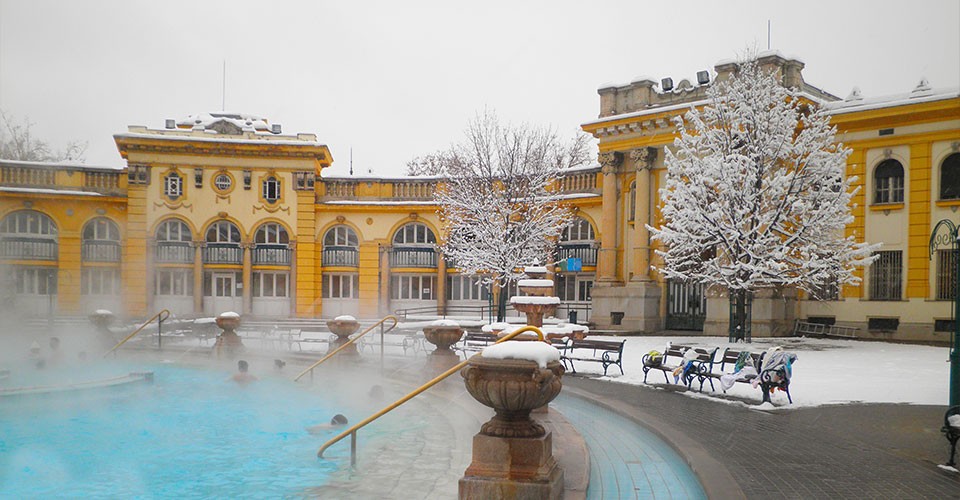
Journey to discover the spas of Hungary and the spa city of Budapest
Hungarian thermal baths are a must-visit for those looking to immerse themselves in the healing properties of thermal waters, enjoying a seamless blend of tradition, culture and wellness.
The country boasts a millennia-old tradition in the therapeutic and recreational use of its thermal waters, which naturally spring from the ground and attract tourists from every corner of the world. Among the most famous thermal destinations is Budapest, the capital, where the baths have become true cultural and tourist icons.
Let's start this journey together into the world of Hungarian thermalism.
The history of Hungarian baths
Over the centuries, Hungary has embraced the use of thermal waters, a tradition that has its roots in the Celtic era. However, it was during the Roman period that the significance of thermal waters significantly emerged. Public baths became meeting points and places of wellness, where people gathered to enjoy the therapeutic benefits of thermal waters.
As centuries passed, Hungary underwent Ottoman occupation, which left an indelible mark on the thermal tradition. In Budapest, in the 16th and 17th centuries, luxurious thermal baths such as Rac, Rudas and Kiraly were built, characterized by a central octagonal structure and elaborate decorative details. Despite the Habsburgs' attempts in the 18th century to erase the traces of Ottoman occupation, these historic baths survived and today represent a tangible testimony of a bygone era.
With the further evolution of Hungarian society, the 19th century saw the construction of refined neoclassical baths like those of Lukas and Széchenyi, reflecting the growing interest in thermal cures. Moreover, with the unification of Buda and Pest, Budapest became a reference point for the European aristocracy in search of thermal treatments.
Today, Hungary's thermal legacy is alive and thriving: Hungarian baths offer a wide range of experiences, from traditional to modern. These places not only preserve their ancient tradition of healing and relaxation but also represent a fundamental part of the country's history.
Hungarian thermal waters
The thermal waters of Hungary represent a valuable national resource, naturally springing from the depths of the earth. Their uniqueness is attributed to the presence of a very thin Earth's crust in the Carpathian region, which has allowed the heating of aquifers and enrichment with precious minerals, endowing them with healing properties.
Among the numerous benefits offered by these thermal waters, their effectiveness in treating circulatory disorders stands out due to the rich concentration of essential minerals. Moreover, they have proven particularly effective in soothing rheumatic and joint pains, promoting complete relaxation.
Beyond their therapeutic properties, these thermal waters represent a tangible symbol of Hungary's connection with its history and territory. Over the centuries, this rich heritage has been preserved and continues to play a fundamental role in the wellness sector: the fusion of natural elements and cultural traditions has given life to a unique thermal experience, attractive both to locals and international visitors in search of an oasis of peace and healing.
The most famous spas in Hungary
Amidst the vast expanses of the Hungarian plains, stretching endlessly and the cities bustling with cultural events, Hungary reveals a unique aspect: its vocation as a thermal destination. The thermal baths, both the famous and the hidden ones, are authentic sanctuaries for anyone seeking relief from health ailments or simply wishing to enjoy some relaxation.
Among these thermal reflections, the renowned Lake Hévíz stands out prominently, a jewel of Hungary and a prestigious thermal center in Europe. This extraordinary thermal lake, the largest warm water lake in Europe and the second largest in the world, enchants with its surface adorned with red Indian water lilies, a true invitation to regeneration.
In the heart of the northern mountains, in Miskolctapolca, fascinating thermal baths are carved into caves by the water itself over millennia. Here, variations of light along the underground river path create a unique and enchanting atmosphere, adding an extra touch to the pleasure of the thermal bath.
Meanwhile, in the picturesque village of Egerszalók, near Eger, a thermal phenomenon comparable only to that of Pamukkale in Turkey unfolds: the thermal water, containing high amounts of limestone and salt, over time has shaped a landscape of white hills, dotted with pools and springs. The thermal waters of this place, with temperatures between 65°C and 68°C, prove to be valuable allies in alleviating bone, rheumatic and arthritic disorders.
Moving to Western Hungary, we find places like Bükfürdő, Sárvár, Zalakaros and Harkány, which constitute additional thermal oases, while to the east, beyond the baths of Miskolctapolca and Egerszalók, lie the baths of Gyula and Hajdúszoboszló.
However, the undisputed queen of the baths is the capital, Budapest, with over 120 thermal springs feeding the most famous thermal establishments in Europe.
The famous thermal baths of Budapest
Budapest is renowned as the "city of baths", a title more than fitting given the abundance and variety of thermal baths dotting its urban landscape. The city sits atop a vast network of geothermal aquifers, providing thermal mineral waters with healing powers. This natural phenomenon has transformed Budapest into an ideal destination for relaxation and wellness through hydrotherapy.
Among the various thermal baths in Budapest, the following stand out:
- Széchenyi Baths: a must-visit for anyone wanting to explore Budapest's thermal culture. Located in the city center since 1923, these baths have a castle-like structure and are among the largest in Europe. They offer a wide range of pools at different temperatures, allowing for a unique experience of moving between indoor and outdoor areas. The neo-baroque architecture gives the Széchenyi Baths a historic and sumptuous atmosphere.
- Gellért Baths: situated at the foot of Gellért Hill, these baths, within the hotel of the same name, represent another architectural and relaxation jewel of Budapest. With an elegant Art Nouveau atmosphere, the baths are adorned with colorful mosaics and artistic details that create a sophisticated and elegant environment.
- Rudas Baths: reflect the legacy of the Ottoman rule, with architecture evoking that era. The atmosphere is intimate and engaging. The Turkish thermal pools, nestled under a majestic Ottoman dome, offer a meeting between past and present, with 5 thermal pools with temperatures ranging from 28°C to 42°C.
- Veli Bej Baths: although not part of the Budapest Municipal thermal circuit, these baths date back to the Ottoman era and offer a historic atmosphere with various thermal pools, saunas and relaxation rooms. It is a quiet and authentic place with 7 thermal pools ranging from 22°C to 40°C and three types of sauna.
- Király Medicinal Baths: the oldest baths in Budapest, valued for their healing properties, thanks to the thermal water that flows into 3 pools between 32°C and 40°C, rich in minerals beneficial for health and wellness.
These luxurious thermal baths in Budapest, along with many other options beyond those listed, offer a wide variety of thermal experiences, ensuring that every visitor finds their own corner of peace and wellness in the "city of baths."
Regarding the entrance fees to the baths in Budapest, although they may seem like magical places, rich in history and luxury, they are accessible to everyone thanks to the variety of tickets available depending on the day, time of entry, or chosen option, which can range from half-day entries to special occasion access.
The perfect skincare for your trip to Hungary
To fully appreciate the thermal baths of Hungary, especially those in Budapest, it is advisable to plan your visit during the spring and the first weeks of autumn. During these periods, the climate is mild and pleasant (with occasional temperature swings from day to night), allowing you to enjoy the outdoor thermal waters and explore the city without the summer heat peaks or winter cold. The thermal experience is even more relaxing when the outside temperatures are cool, creating a beneficial contrast with the warm water of the thermal pools.
If you are planning a visit to Hungary, it is also important to consider the health of your skin. For this reason, Thermae - The Temple of Health has thought of a series of perfect products for your trip, based on bromo-iodine saltwater.
Facial cosmetics for your trip to Hungary
To prevent the climate from preventing you from fully enjoying your trip to Hungary, you can take care of your skin with our Evening Face Routine Rebalancing that soothes and normalizes the skin overnight, helping it to regain its balance.
The routine consists of:
- Vanitas thermal cleansing milk to gently cleanse the face leaving the skin hydrated, receptive and purified.
- Nebula remineralizing thermal water for immediately fresher and protected skin.
- Rebalancing facial serum Serum that regulates the osmotic pressure of the skin, restoring its natural balance and making it more invigorated and healthy.
- Nocturna repairing face cream that works overnight leaving the skin pleasantly soft, scented, soothed and hydrated.
Thermal baths of Hungary: an enchanted place where thermalism has deep and well-established roots
The thermal baths of Hungary constitute a cultural and natural heritage of inestimable value, where the charm of the country's millennia-old history blends with the modern desire for well-being and relaxation. A trip to this magical thermal place goes beyond a simple holiday: it represents an immersion in history, thermalism and the hospitality of a country that has been welcoming visitors with its beneficial thermal baths and unique thermal traditions for centuries.


